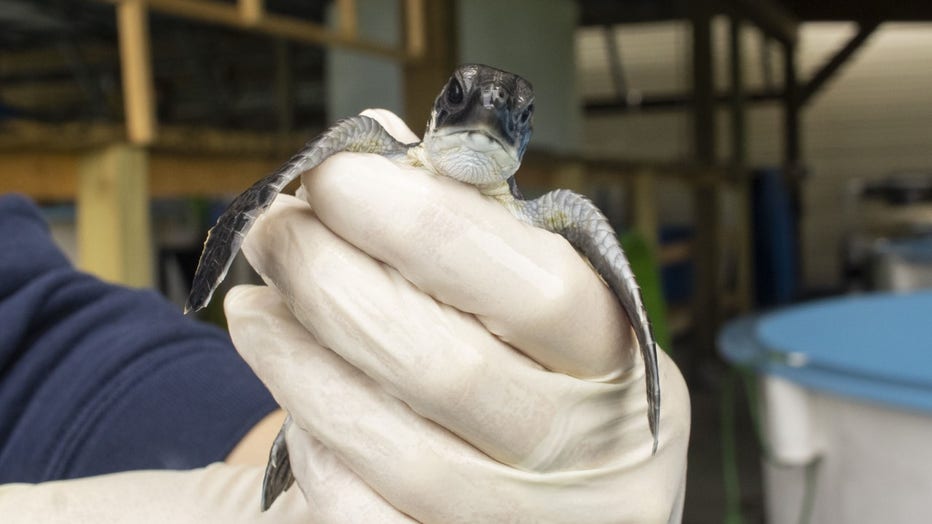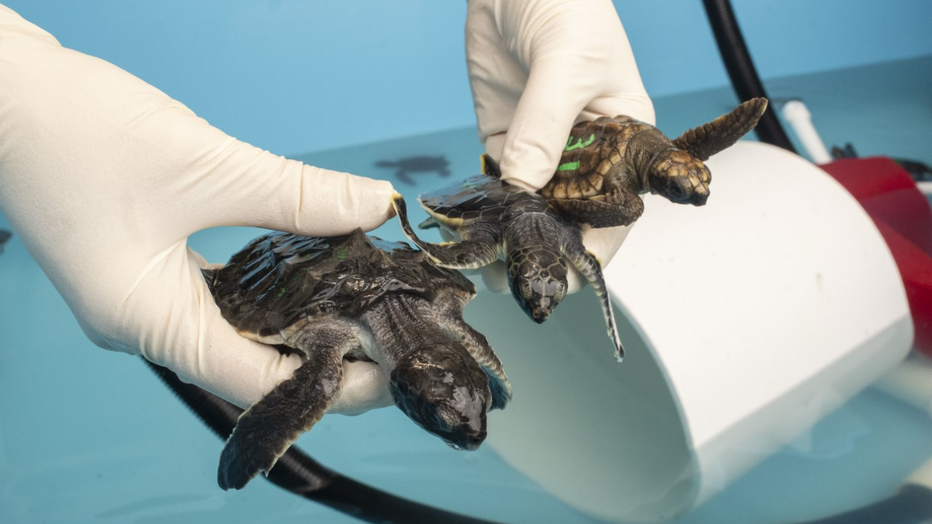ETA washes post-hatchling sea turtles back onto Brevard County beaches

Tiny sea turtles washing ashore due to ETA
Tropical Storm ETA is causing some tiny sea turtles to wash back ashore in Brevard County. Officials urge to give them a call if you spot one of the tiny marine animals.
BREVARD COUNTY, Fla. - With the widespread effects of Tropical Storm ETA, post-hatchling sea turtles are being washed in along Brevard County beaches.
These young sea turtles, commonly called washbacks, hatched earlier in the summer and swam 20-25 miles offshore to the Sargasso Sea where they have been living in the floating beds of seaweed.
Storms, waves, and wind can disrupt these beds and bring the young sea turtles to shore along with the seaweed.

Courtesy: Brevard Zoo’s Sea Turtle Healing Center
“We really started seeing them coming in yesterday (Sunday) morning. People were finding them out on their morning walks,” said Susan Skinner, chair of The Sea Turtle Preservation Society. “We had 30 yesterday (Sunda) that we rescued and another 30 or so today (Monday).”
The rescued turtles are being taken to the Brevard Zoo, where they are evaluated, cleaned up and rehabilitated.

Courtesy: Brevard Zoo’s Sea Turtle Healing Center
The Sea Turtle Preservation Society asks the public to call its hotline at 321-206-0646 for guidance if a post-hatchling is found on the beach.
“Trained STPS volunteers are responding to the situation as conditions allow, so please call STPS for instructions if you do find a post-hatchling on the beach," Skinner said.
STPS discourages the public from looking for these post-hatchling sea turtles.
STPS operates a Sea Turtle Emergency Response Program with volunteers who will survey the beaches as needed when conditions allow.
These volunteers have received training and have been authorized by the Florida Fish and Wildlife Conservation Commission.
Please remember that sea turtles are protected by law and it is illegal to touch one of any size.
If you do happen to find a post-hatchling on the beach, please follow these guidelines:
• CALL the STPS emergency hotline at 321-206-0646 or FWC at 888-404-3922 for guidance.
• DO NOT put the post-hatchling into the ocean. It likely will not have enough energy to survive.
• DO NOT place the post-hatchling in water or air conditioning. This could further injure or kill the sea turtle.

